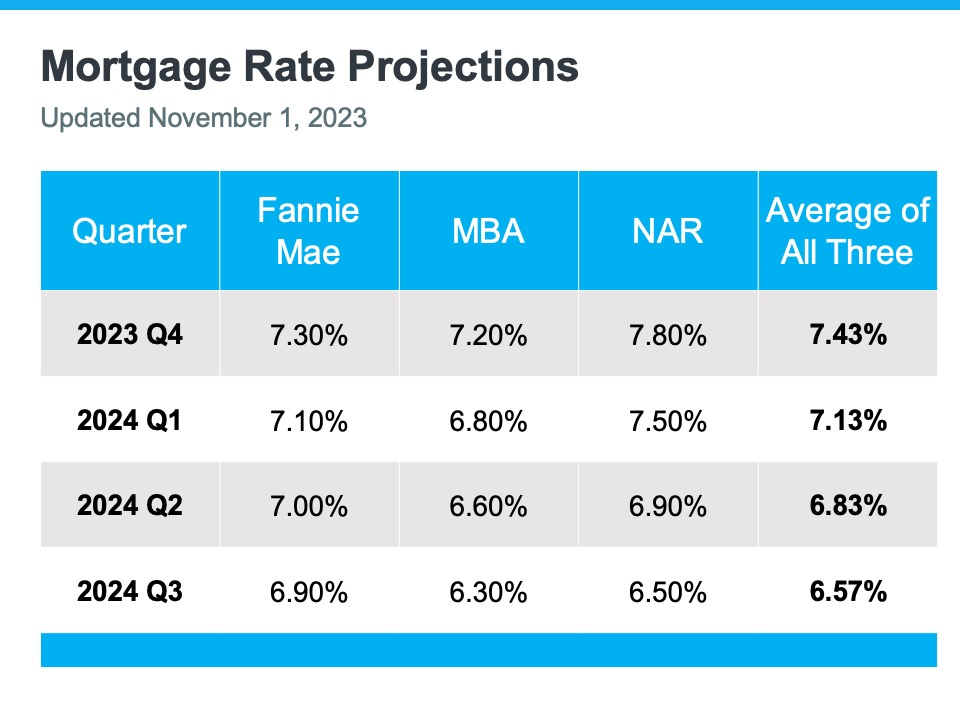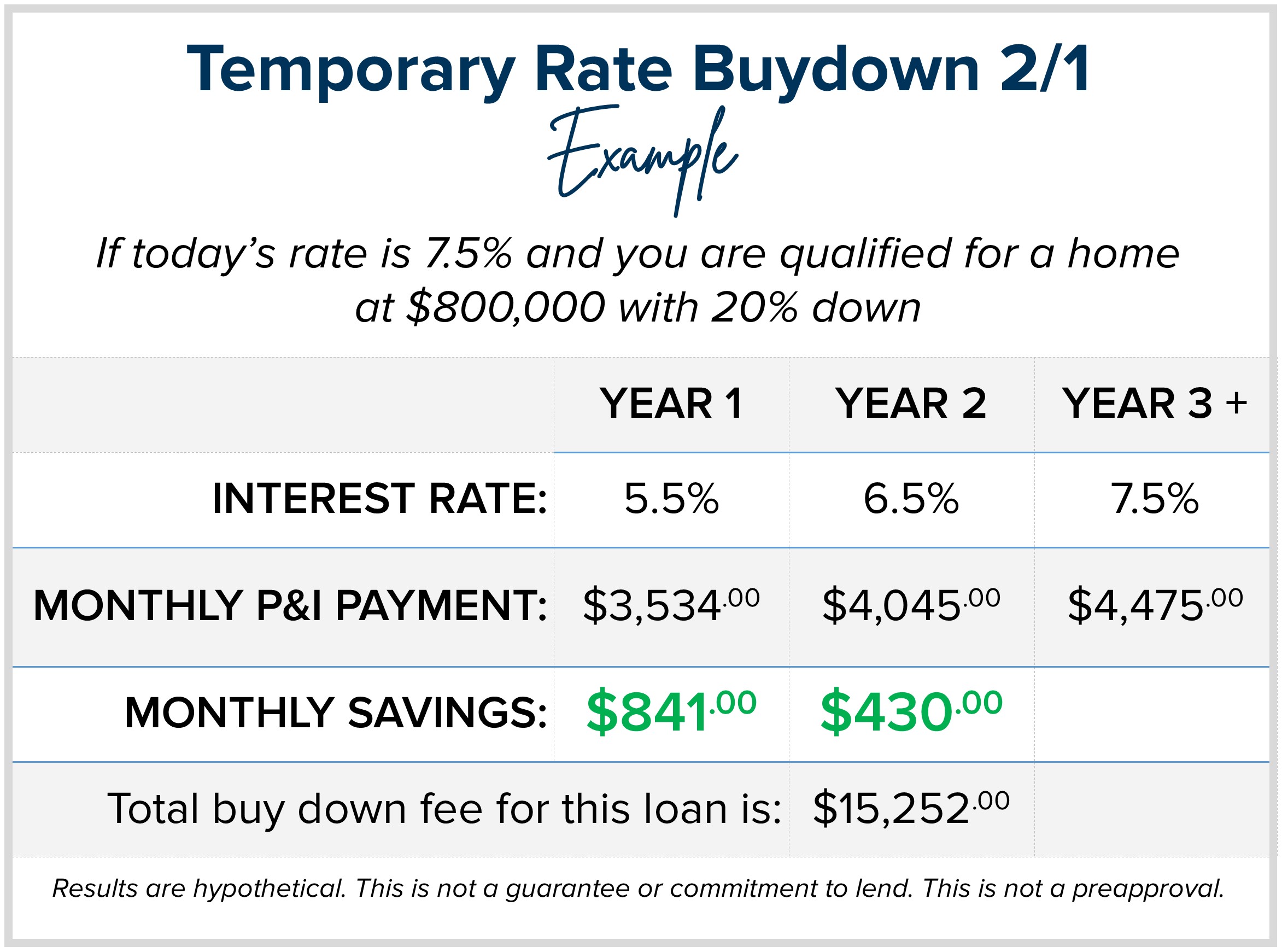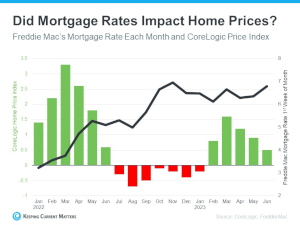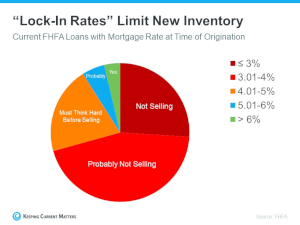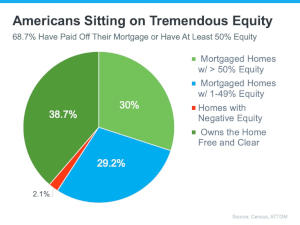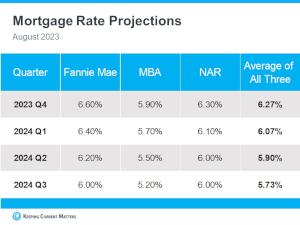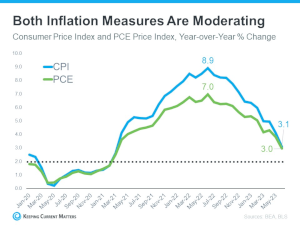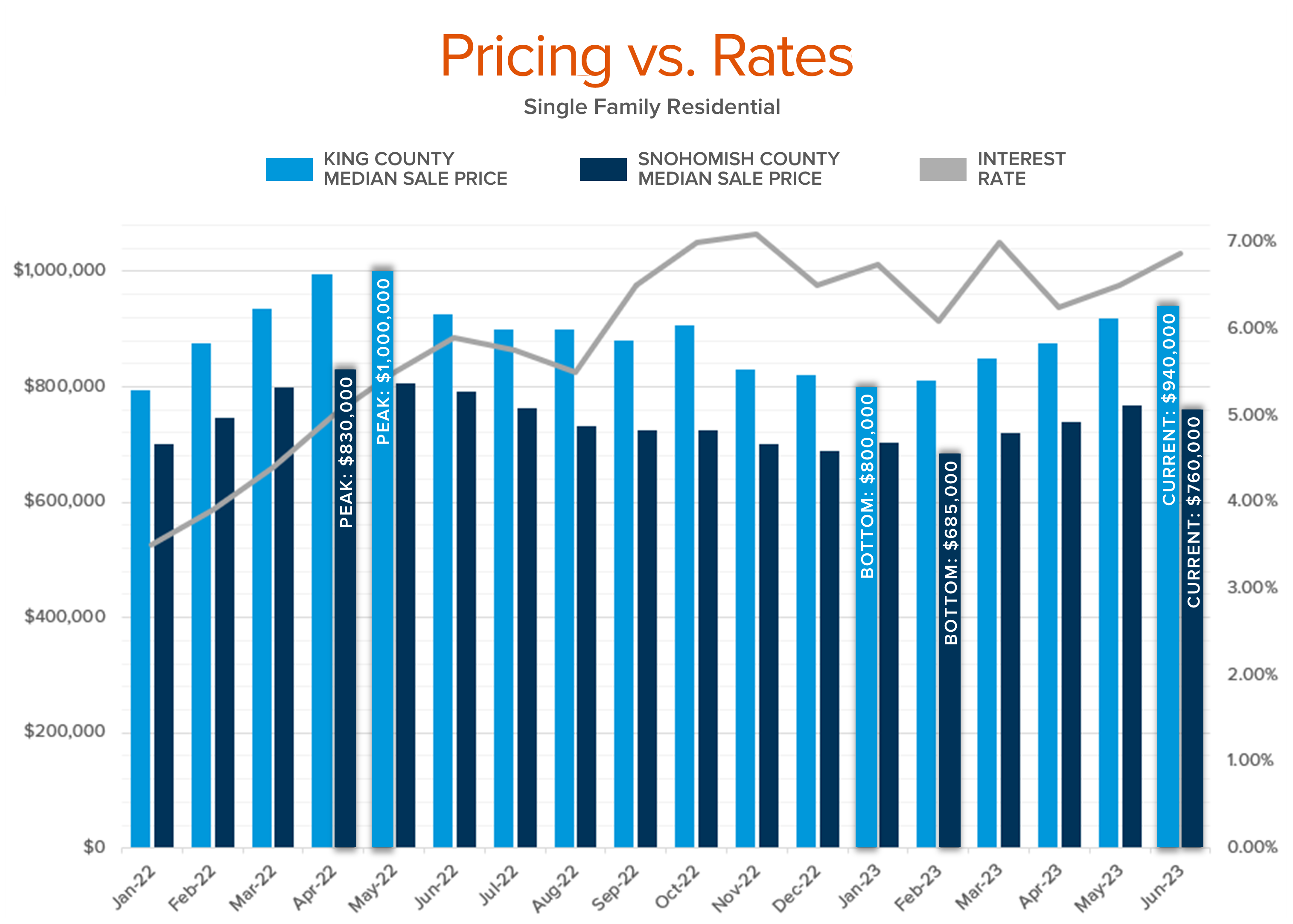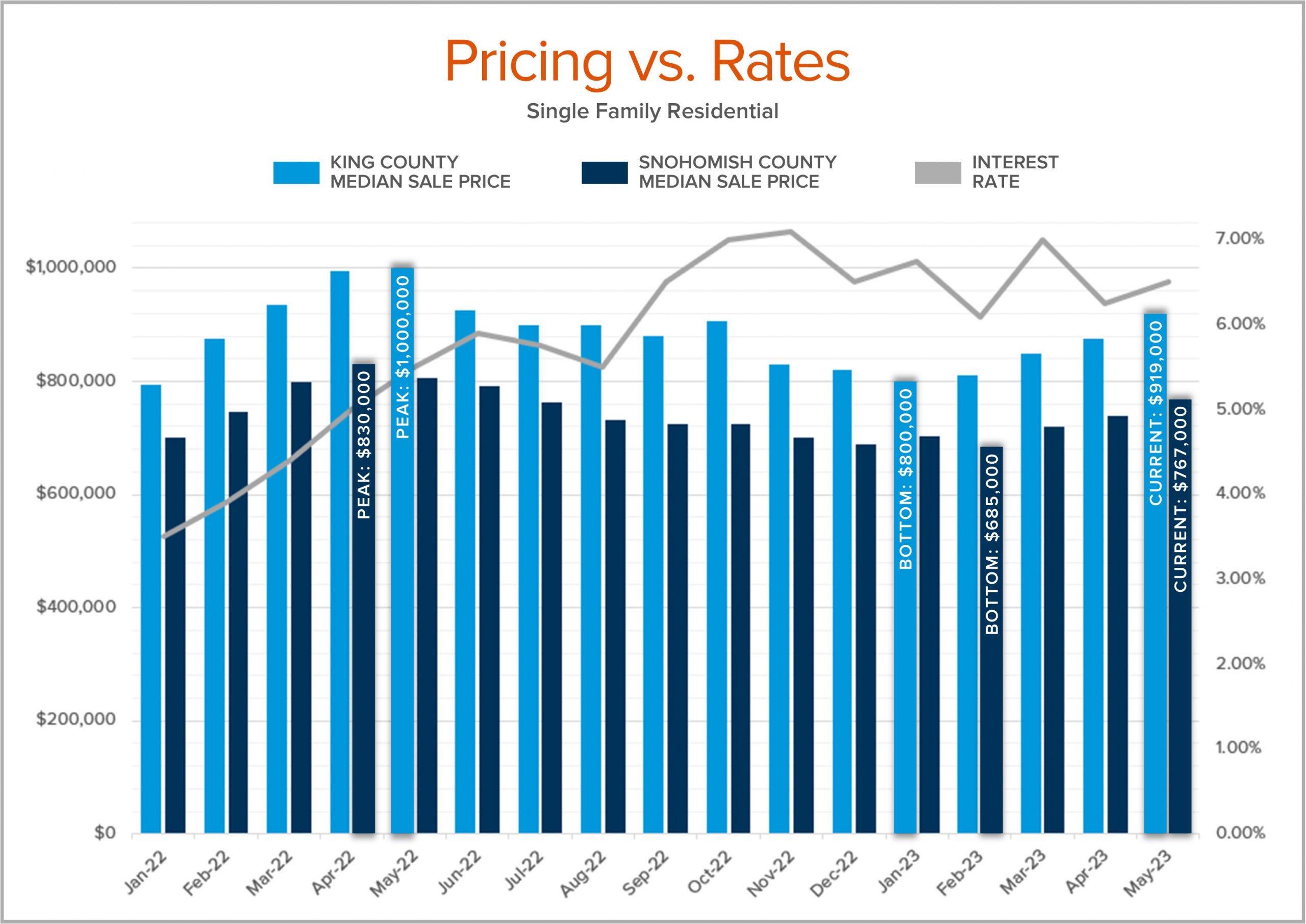Social Links Widget
Click here to edit the Social Media Links settings. This text will not be visible on the front end.
Matthew Garner’s 2024 Economic Forecast Highlights

Last week, my office hosted our 16th Annual Economic Forecast Event featuring Matthew Gardner. Matthew is a sought-after economist focused on the national and local economies and has a deep understanding of the housing market across the country and right in our own backyard. He is an economic advisor for the State of Washington, Governors Council, lectures on real estate economics at the University of Washington, and is found quoted in various media outlets throughout the year as a respected expert. He is certainly a trusted real estate advisor that I look to to stay informed to help educate my clients.
The event was virtual and I have the recording and his PowerPoint in a PDF that I am happy to share with you, please reach out if you would like me to email it to you. So much was shared in his 60-minute presentation that was focused on the national economy and a deep dive into both King and Snohomish Counties, followed by Q & A. I can’t quite cover it all here, but here are some highlights!
1. Inflation levels have dropped from their peak and are now tracking with more normalized levels. This has caused interest rates to start to drop, which is a trend he sees continuing in 2024.

2. The U.S. unemployment rate measured at 3.8% at the end of 2023 and is forecasted to rise ever so slightly and remain under the long-term average of 4.5%. In King and Snohomish Counties the unemployment rate averaged 4% at the end of 2023.

3. There is a major labor gap in both King and Snohomish Counties, with job postings heavily outweighing labor supply. Biotech is the darling of the moment which will balance out the IT side in the overall jobs picture.

4. Interest rates are predicted to gradually decrease throughout 2024 as inflation softens. The Fed will slow-play these reductions to get them right, so they do not have to raise them again.

5. The Tri-County area of Snohomish-King-Pierce Counties had massive organic population growth from 2020-2022, much of which was international vs. domestic.

6. Homeowner equity averages 60% in King County and 57.5% in Snohomish County. According to the median price in King County in December 2023 that is $511,200 and $391,000 in Snohomish County. Homeownership proves to have the strongest impact on household wealth.

7. There will NOT be a bubble in the housing market! Given that prices remained stable in 2023 amongst the highest interest rates we’ve seen in two decades along with inflation at a high, the housing market has proven to be a fortuitous economic marker. Rates and inflation are both improving, which will bode well for home values. Our biggest challenge is the lack of inventory and affordability.
8. Price growth in King and Snohomish Counties was flat year-over-year (2022 to 2023) after massive growth from 2020-2022, which was positive given the correction in prices and rise in interest rates. Prices are forecasted to modestly increase in 2024. Tight inventory and continued buyer demand will drive this growth while interest rates temper.

Please reach out if you would like to learn more and receive the documents and recording. Also, you can count on me to follow the trends, statistics, and rhythm of the market throughout the year. It is my goal to gain knowledge and understanding so I can help keep you informed. This level of service helps empower my clients to make thoughtful, sound decisions when navigating their investments and big life choices.
Cell: 425.772.3783 | JillLanger@windermere.com
Top 10 Housing Market Predictions for 2024
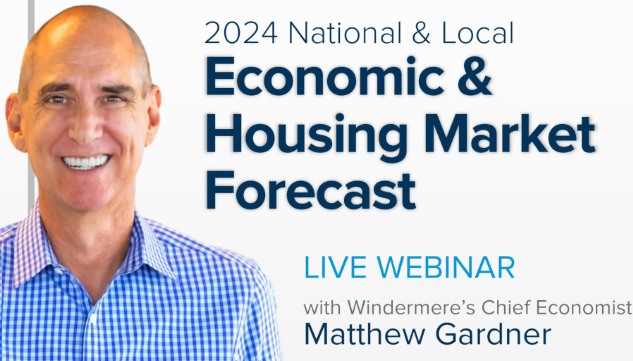
|
|
|
|
|
|
|
Now or Later: When Interest Rates Drop…
The question that many potential buyers are asking themselves right now is: should I wait for rates to drop before I buy? Higher interest rates have certainly made monthly payments higher and challenged overall affordability, however it is important to consider creative financing options and what the impact on prices will be once rates lower.
Experts predict rates to decrease over the next 12-18 months. In fact, we have seen rates drop half a point over the last 30 days. Currently, the 30-year conventional rate is hovering about 7.5%. We saw a correction in prices when rates jumped by a point and crested 6% in mid-2022. Since Dec 2022, prices found their bottom, and price appreciation started happening again. Year-to-date, the average interest rate has been around 7% and prices have not been in a free fall, they have grown and remain stable.
Just like the correction that happened in 2022, it is safe to say there is a correlation between prices and rates. If the experts are correct and rates fall over the course of the next year or so, we should anticipate prices to increase. That is what hangs in the balance when making the decision of whether to buy now or later. The example to the right shows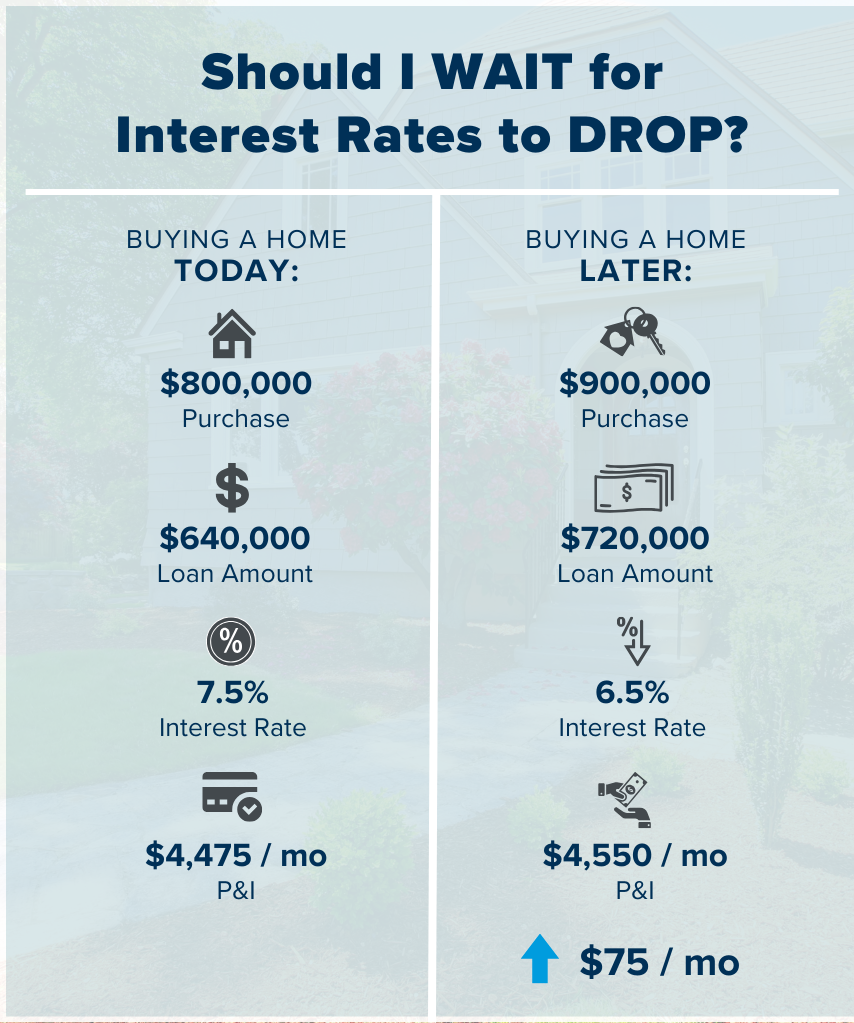 the effect that price appreciation will have despite rates being lower. It was not that long ago that we were experiencing bidding wars where homes escalated in the double digits. As you can see, the higher price results in a higher payment even with the lower rate.
the effect that price appreciation will have despite rates being lower. It was not that long ago that we were experiencing bidding wars where homes escalated in the double digits. As you can see, the higher price results in a higher payment even with the lower rate.
If one is able to afford a purchase now with today’s rate, they can refinance when rates go down and save themselves a lot of money on their payment while keeping a fixed price. Additionally, if a buyer can secure a rate buydown, such as a 2-1 buydown, the higher rates can be overcome and a refinance can fix the rate when the rates drop.
Here is an example: let’s say you are shopping for a house and have the same $800,000 budget and a 20% down payment with today’s rate of 7.5%. The monthly principal and interest payment would be $4,475.00. You could do a 2-1 buydown (2-points lower in year one and 1-point lower in year 2) which would have your payment in year one be based on an interest rate of 5.5% with a monthly principal and interest payment of $3,534 – a savings of $841.00 per month. For year two, the monthly principal and interest would be based on 6.5% resulting in a monthly payment of $4.045.00, a $430.00 per month savings. The total savings in monthly payments with the 2-1 buy-down over the two years would be $15,252.00.
The roughly $15,000 in monthly payment savings is paid upfront at closing and in some cases paid by the seller. The buyer still needs to qualify based on the 7.5% interest rate as the payments will convert to the payment based on the 7.5% in year three moving forward. The strategy here is to never have the payment increase to 7.5% because the buyer plans to refinance when rates come down, and will permanently fix their rate below 7.5%. A bonus is that if the entire $15,000 credit has not been used yet, in some cases those funds can be applied towards the refinance.
You see, there are many options to consider when a buyer is balancing rates, prices, payments, and their desire to make a move. I understand that I am in the business of helping people navigate big life changes while ensuring their financial investment is sound. I felt it was an important message to share these examples in case you or someone you know was thinking about making a purchase but was feeling confused or stifled by the current rate environment. If you want to learn more or need a referral to a reputable lender, please reach out. It is always my goal to help keep my clients well-informed and empower strong decisions.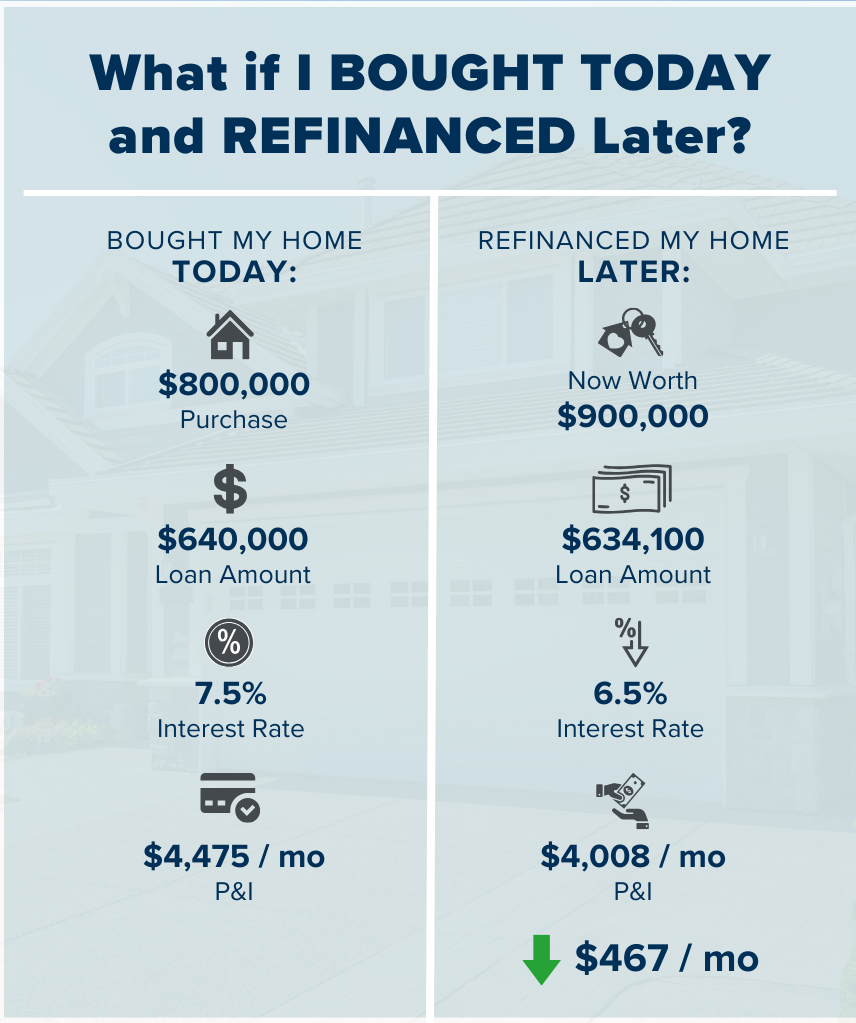
The question that many potential buyers are asking themselves right now is: should I wait for rates to drop before I buy? Higher interest rates have certainly made monthly payments higher and challenged overall affordability, however it is important to consider creative financing options and what the impact on prices will be once rates lower.
Experts predict rates to decrease over the next 12-18 months. In fact, we have seen rates drop half a point over the last 30 days. Currently, the 30-year conventional rate is hovering about 7.5%. We saw a correction in prices when rates jumped by a point and crested 6% in mid-2022. Since Dec 2022, prices found their bottom, and price appreciation started happening again. Year-to-date, the average interest rate has been around 7% and prices have not been in a free fall, they have grown and remain stable.
Just like the correction that happened in 2022, it is safe to say there is a correlation between prices and rates. If the experts are correct and rates fall over the course of the next year or so, we should anticipate prices to increase. That is what hangs in the balance when making the decision of whether to buy now or later. The example to the right shows the effect that price appreciation will have despite rates being lower. It was not that long ago that we were experiencing bidding wars where homes escalated in the double digits. As you can see, the higher price results in a higher payment even with the lower rate.
If one is able to afford a purchase now with today’s rate, they can refinance when rates go down and save themselves a lot of money on their payment while keeping a fixed price. Additionally, if a buyer can secure a rate buydown, such as a 2-1 buydown, the higher rates can be overcome and a refinance can fix the rate when the rates drop.
Here is an example: let’s say you are shopping for a house and have the same $800,000 budget and a 20% down payment with today’s rate of 7.5%. The monthly principal and interest payment would be $4,475.00. You could do a 2-1 buydown (2-points lower in year one and 1-point lower in year 2) which would have your payment in year one be based on an interest rate of 5.5% with a monthly principal and interest payment of $3,534 – a savings of $841.00 per month. For year two, the monthly principal and interest would be based on 6.5% resulting in a monthly payment of $4.045.00, a $430.00 per month savings. The total savings in monthly payments with the 2-1 buy-down over the two years would be $15,252.00.
The roughly $15,000 in monthly payment savings is paid upfront at closing and in some cases paid by the seller. The buyer still needs to qualify based on the 7.5% interest rate as the payments will convert to the payment based on the 7.5% in year three moving forward. The strategy here is to never have the payment increase to 7.5% because the buyer plans to refinance when rates come down, and will permanently fix their rate below 7.5%. A bonus is that if the entire $15,000 credit has not been used yet, in some cases those funds can be applied towards the refinance.
You see, there are many options to consider when a buyer is balancing rates, prices, payments, and their desire to make a move. I understand that I am in the business of helping people navigate big life changes while ensuring their financial investment is sound. I felt it was an important message to share these examples in case you or someone you know was thinking about making a purchase but was feeling confused or stifled by the current rate environment. If you want to learn more or need a referral to a reputable lender, please reach out. It is always my goal to help keep my clients well-informed and empower strong decisions.
New Agency Law Changes: Transparency, Consumer Protection, & Commitment


New Agency Law Changes: Transparency, Consumer Protection, & Commitment
On January 1, 2024, major changes to the Law of Agency will go into effect. These changes result from the real estate industry in the state of Washington wanting to elevate the level of transparency and consumer protection surrounding buyer representation. Senate Bill 5191 was voted into law requiring adjustments in how brokers operate when working with buyers.
The seller side of a transaction has always required a separate contract (a Listing Agreement) that outlines the representation, compensation, and the level of commitment the buyer and broker have to each other. It has always been a bit shocking to me that the state did not require such a contract for a buyer and broker. Under new legislation set to take effect on January 1, 2024, buyers and brokers will be required to have a signed contract – a Buyer Brokerage Service Agreement (BBSA). This new contract will provide a consistent and professional guidepost to help everyone understand the buyer and broker relationship, just like a seller and broker do when they enter into a listing agreement.
Buying a house is not an easy task, nor is guiding someone successfully through the process. It is about time the law sets a clear explanation of how buyer representation works and encourages a clearly communicated partnership. I've always believed that having consistent processes in my business leads to a better outcome for my clients. This advancement for our industry will elevate these processes and in turn, raise the bar.
Key Revisions
For years, real estate brokerage firms were only required to enter into written agreements with sellers, not buyers. Beginning on January 1, 2024, the Agency Law will require firms to enter into a written “brokerage services agreement” with any party the firm represents, both sellers and buyers. This change is to ensure that buyers (in addition to sellers) clearly understand the terms of the firm’s representation and compensation.
The services agreement with buyers must include:
• The term of the agreement (how long the buyer and broker are committed to working together);
• The name of the broker appointed to be the buyer’s agent;
• Whether the agency relationship is exclusive or non-exclusive;
• Whether the buyer consents to the individual broker representing both the buyer and the seller in the same transaction (referred to as “limited dual agency”);
• Whether the buyer consents to the broker’s designated broker/managing broker’s limited dual agency;
• The amount the firm will be compensated and who will pay the compensation; and
• Any other agreements between the parties.
All of these options are outlined in the new BBSA contract and will be presented and discussed before deciding to embark on the home-buying journey together. It will eliminate any guesswork and encourage a strong work relationship surrounding an incredibly important task. This will help my clients understand my level of commitment and professionalism, and how I help my clients achieve effective results.
I have provided the links to the new Agency Pamphlet and the revisions to Senate Bill 5191 below for your review. If you have any questions or are thinking about making a purchase in 2024, please reach out. It is always my goal to help keep my clients well-informed and empower strong decisions. I am happy to bring this information to you ahead of the change, so you are well prepared should you have any real estate changes coming your way in the future.
Revised Pamphlet. The pamphlet entitled “Real Estate Brokerage in Washington” provides an overview of the revised Agency Law.
Revised Agency Law. Substitute Senate Bill 5191 sets forth the revised Agency Law in its entirety.
Check out the latest "Mondays with Matthew" (Matthew Gardner, Windermere's Chief Economist) that addresses inventory levels, interest rates, existing home sales, and the price stability we have experienced since the first of the year. Despite higher interest rates, historically low inventory has kept prices stable!
Please note that I will be hosting a Virtual Economic Forecast Event with Matthew on the evening of Wednesday, January 17th, 2024. There will be a lot to cover as 2023 was a transitional year and 2024 is an election year! Be on the lookout for more information and save the date if you would like to attend.
The Low Inventory Effect: Nationally and Close to Home


The Low Inventory Effect: Nationally and Close to Home
The video below from Matthew Gardner, Windermere's Chief Economist, refers to the effects of constricted inventory levels on the national housing market in a higher interest rate environment. Review the localized numbers that I gathered that pertain to King and Snohomish Counties and then check out what he has to say about the national trends.
Overall, inventory has been tight in 2023! Many people made moves in the pandemic-fueled market and are deciding to stay put. They utilized the lower interest rates to secure their long-term home and don't see a need to move anytime soon. Did you know the average person stays in their home for 10 years?
Others are not completely satisfied with their homes but feel attached to the lower rate and are pushing through the discomfort until rates settle. Some are deciding to come to market because their homes do not fit their lives anymore, and some are bucking the rates and getting creative with financing. The buyers working the creative financing route with rate buy-downs will be rewarded when rates lower and prices go up.
Year-to-date new listings in King County are down 30% over 2022 and down 37% in Snohomish County. Closed sales are down 27% over 2022 in King County and down 27% in Snohomish County. Even though there have been fewer new listings year-over-year, the closed sale percentage is tracking more favorably which demonstrates buyer demand. This is why inventory is tight. In August 2023 there were 1.3 months of inventory in King County and 1.1 months in Snohomish County. This illustrates a seller's market.
Closed sales peaked in 2021 in both counties at 20,132 in King County and 8,663 in Snohomish County. As we venture away from these outlier pandemic years, consumers are wrapping their heads around the changing environment. Year-to-date, King County has had 16,069 closed sales and 5,344 in Snohomish County. Year-to-date, King County is pacing slightly higher than 2019, which was a normal market prior to the pandemic and Snohomish County is lagging behind by just a bit.
The pace of inventory has helped stabilize prices and created price growth since the start of 2023. Buyer demand exists because people's lives change, and we have the Millennial generation out in full force. If your life is leading you to consider a move, please reach out. Please do not rely on the noise in the media, they will lead you astray.
I can help you dig into the data and devise a plan that relates to YOUR life. With equity levels astoundingly high (over 50% of homeowners in the U.S. have over 50% equity), moves are being made with great success. For buyers, the rates can be overcome with some creativity, lived with for now, or you can set a benchmark for when you're ready. If you are curious about how today's market relates to your goals or want to make a plan for the future, let's talk! It is always my goal to help keep my clients informed and empower strong decisions.
Win-Win: How to Overcome Interest Rate Pressure with Creative Financing


Win-Win: How to Overcome Interest Rate Pressure with Creative Financing
Lately we have talked about life changes leading to real estate moves. Sometimes moves are brought on by joyful advancements in life and sometimes they are motivated by hardship. Then there are times when your actual house just doesn't fit your life anymore and it is time for something different. Whatever might be calling someone to make a move, they also have to assess the affordability.
There are three aspects to affordability: price, interest rate, and income. Price and interest rate will determine your monthly payment, and your income will provide the means to maintain and build your investment. One way I have been able to help my clients strategize affordability with higher interest rates is by using creative financing options.
Most often a home buyer will procure a home loan with a 30-year term and the current interest rate. In the month of August, the 30-year conventional interest rate averaged 7.25%. While 7.25% is reflective of the average over the last 30 years, it is 2-3% higher than what we have experienced over the last 5 years. According to several experts, rates are predicted to decrease as we finish out 2023 and head into 2024. That also means that it is very likely prices will increase when that happens.
To overcome the higher interest rates and secure today's prices, I have helped some of my clients to arrange an interest rate buy-down with their lender. Sometimes we have even been able to get the seller to financially assist in paying for the buy-down. There are two types of buy-downs: a permanent buy-down and a temporary buy-down.
A permanent buy-down requires about 3% of the purchase price to buy the rate down by a point for the 30-year term of the loan. A good rule of thumb to remember is that every 1-point in rate equals 10% in buying power. For example, if the rate is 7% and you are qualified for a home at $800,000, if the rate went down by 1 point to 6% you could now afford $880,000 and have a very similar payment. Another way to look at this is simply the monthly payment itself. An $800,000 purchase with 20% down and a 6% interest rate would save a buyer $420.82 a month vs. the payment at 7%.
A permanent buy-down is a useful tool and so is a temporary buy-down. It is actually one of the most powerful tools in today's market. It costs far less than a permanent buy-down, and with rates predicted to decrease over the next 12-18 months as inflation settles, you could easily find yourself in a position to refinance.
Here is an example: let's say you are shopping for a house and have the same $800,000 budget and a 20% down payment with today's rate of 7%. The monthly principal and interest payment would be $4,257.94. You could do a 2-1 buydown (2 points lower in year one and 1 point lower in year 2) which would have your payment in year one be based on an interest rate of 5% with a monthly principal and an interest payment of $3,435.66 - a savings of $822.28 a month. For year two, the monthly principal and interest would be based on 6%, resulting in a monthly payment of $3,837.12 - a $420.82 savings. The total savings in monthly payments with the 2-1 buy-down over the two years would be $14,917.18.
The roughly $15,000 in monthly payment savings is paid upfront at closing, and in some cases paid by the seller. The buyer still needs to qualify based on the 7% interest rate as the payments will convert to the payment based on the 7% in year three moving forward. The strategy here is to never have the payment increase to the 7% amount because the buyer plans to refinance when rates come down and will permanently fix their rate below 7%. A bonus is that if the entire $15,000 credit has not been used yet, in some cases those funds can be applied towards the refinance.
This strategy has been effective in helping buyers secure a monthly payment that is more affordable so they can make a move now based on life's needs and wants. It also helps them secure today's prices. If we find a home that has had a little longer market time, a seller is likely to assist with the $15,000 credit vs. reducing their price by 3% to accommodate a lower payment for 30 years. The temporary assistance in reducing the payment for 1 to 2 years is a viable tool for both the buyer and seller to create a win-win.
I felt it was important to bring these options to light and to encourage people to not just take today's market at face value. Creativity, collaboration, and calm have led to some of the most rewarding sales this year for both buyers and sellers. When people logically work together to accomplish moves in an environment that seems difficult, they find success. Ultimately, I am here to help my clients match their real estate to their lives despite where the rates are today.
I love rolling up my sleeves and creating a plan to help my buyers and sellers accomplish their goals. It is my mission to help keep my clients informed and empower strong decisions. If you or someone you know are curious about how today's market matches your needs, please reach out.

Thank you to everyone who pitched in during the Summer Food Drive! Through your generosity, we collectively donated $3,060 and 1,503 pounds of food to Volunteers of America Western Washington food banks! This is all going directly into our communities to help our neighbors in need.
Thank you!


Should You Stay or Should You Go?


Should You Stay or Should You Go?
Interest Rates Limit Inventory and Stabilize Prices
There has always been a direct correlation between interest rates and home prices. The rule of thumb has always been when rates go up prices go down, and vice versa. This was temporarily proven true in the summer of 2022 when rates quickly rose by 2% (3.5%-5.5%) over 5 months. It created a price correction in the second half of 2022 as buyers retreated from the market due to affordability. One should note that price acceleration was rapid from May 2020 to May 2022 and in that two-year period prices grew upward of 50% in King and Snohomish Counties. That was an unsustainable pace. In all honesty, this was inflation's role in the housing market, and increasing the rates was the Fed's way of getting control.
While there was a correction from May 2022 to January 2023, since then prices have started to grow again despite the rates hovering in the 6-7% range. In fact, the median price is up from the bottom (Jan/Feb 2023) by 13% in King County and 9% in Snohomish County. Further, the median price in July 2023 was even with July 2022 in King County and down by only 2% in Snohomish County. This is a sign of price stabilization. Historically, the impact rising rates have on prices year-over-year is not negative. We are in the midst of proving that same theory.
Believe it or not, the higher rates are keeping prices stable because it is limiting the available inventory for sale. You see, there are plenty of buyers out looking for homes right now, and inventory levels are tight because potential sellers are waiting to make a move because they are holding on to their low rate. Our job market is strong, we have people moving to our area from other parts of the country and the millennials are out in full force searching for their first homes.
There are two interesting phenomena going on with potential home sellers right now. First, according to ATTOM Data Solutions, 68.7% of homeowners have at least 50% equity and only 2.1% have negative equity. This is the number one indicator that we are not in a housing crisis or bubble. Second, according to FHFA, 70% of homeowners with a mortgage have a rate of 4% or lower. This is causing people who are no longer happy with where they live to stay a bit longer because they don't want to give up their payment just yet.
Here's the deal though, housing is a reflection of life! According to the US Census, 66% of homeowners would like to upgrade to a nicer home with features that better match their lifestyle, and 45% would like to move to a home to better match the changing size of their household. Life changes motivate moves! Many people are waiting out these life changes until rates come down so they can better afford their desired transition. This has put downward pressure on inventory, limiting selection for buyers, hence creating price growth and stabilization.
So, what is going to happen when rates come down? Experts across the board predict that rates will recede as inflation gains control. This will be a gradual process over the next 12-18 months. The biggest indicator will be inflation reaching the 2% year-over-year mark. Once we hit this point, which we are close to, experts predict the Fed will be comfortable easing off the higher rates. This will cause more homes to come to market as the delta between the rate a homeowner currently holds and what they are willing to take on to indulge their desire to move, will become more attainable. Plus, as rates recede it will increase buyer demand.
We find ourselves in a delicate dance with inflation, rates, inventory, and prices. Someone who desires a move has to consider the impact the rates can have on their payment. Many of these buyers are taking the leap and finding creative ways to offset the rate such as ARM (Adjustable Rate Mortgage) financing, rate buy downs, or they are prepared to re-finance their purchase when rates come down. This way they will have secured a good price which is the basis of their loan.
So, do you stay or do you go? According, to the lyrics from the classic song from The Clash, “If I stay there will be trouble, but if I go there will be double.” This is up to you to decide. Where I can help is to gather the data and help you analyze the market in order to empower you to make the best choice for you and your family. For some, the right time is now and for others, waiting a bit longer will be a good plan.
What I do know, is that when we hit the inflation rate that the Fed is comfortable with and they ease off of rates, the market will tilt. This will be a benefit for some and a challenge for others. In other words, there is not one right answer for everyone and that is where I have the opportunity to serve my clients best.
Helping people navigate the ever-changing market is a skill, an art, and a calling. I am here for it and find great satisfaction in helping people make big life decisions that help bring joy, solve problems, and make them money! My job is a huge responsibility and it is an honor to serve my clients. If you or someone you know are wondering about how today's market conditions affect your goals, please reach out. We can dig into the data, assess your dreams and devise a plan.
Clarity Through Chaos: Using the Data to Guide Decisions


Clarity Through Chaos
Using the Data to Guide Decisions
I think we can all agree that we have been on a bit of a wild ride over the last 12 months in the real estate market. When the Fed decided to change its trajectory on interest rates in mid-2022, it created chaos and confusion.
During times of significant change, it's natural to take a pause and wait for clarity on how things will unfold. Similar reactions were seen when the pandemic hit in early 2020, leading to a temporary halt in the market until it surged in May. I have found that gathering data – whether it’s real-time data or studying historical trends – is incredibly helpful to create clarity and empower strong decisions.
As a real estate professional, I am dedicated to analyzing data on behalf of my clients, and I'm fortunate to have the insights of Matthew Gardner, Windermere's Chief Economist, to guide my research. In this recent article, Gardner examines predictions made by industry experts earlier this year and highlights how they have now aligned with one another. The consensus is that prices are not likely to experience a downward spiral; instead, they continue to rise year-over-year. Indeed, data is a powerful tool.
To illustrate this, I have created a chart using hyper-local data from both King and Snohomish counties, reflecting the median prices over the past 18 months in relation to the rising interest rates. Though we have moved away from the peak of 2022 when rates were at 5%, we remain only slightly lower and significantly higher than the bottom when rates hit 7%. The fact that the market has sustained these higher rates even now, with rates near 7% this summer, demonstrates the market's resilience.
Would the market welcome a drop in interest rates? Absolutely! Predictions suggest that if and when this happens, buyer demand will increase, and more inventory will come to the market as sellers feel more comfortable relinquishing their homes at lower rates to pursue new opportunities. Currently, low inventory due to high interest rates is supporting price stabilization and growth, showing that the market is far from collapsing.
It's essential to understand that the market is not in a free fall; it continues to churn with stable prices. If you've been considering a move, I encourage you to take a closer look at the data. Feel free to reach out to me, and I can adjust the graph to include your local zip code or city, providing you with a more comprehensive view of your investment.
Real estate moves are most often a result of life changes. If you have found yourself questioning whether your four walls currently meet your needs, let's talk! I will assess your goals and apply the data in an understandable way to help guide the best decision for you today or down the road.

The need for food assistance has never been greater due to the end of the Supplemental Nutrition Assistance Program’s (SNAP) Emergency Allotments and soaring food prices. As a result, more and more families across America are facing hunger. Our food banks are experiencing a surge in visitors and struggling to meet the increased demand.
The good news is that this incredible network of go-givers can do something about it!
Fueled by the collective generosity that Windermere is so well known for, I’m rallying my network to come together to help us towards our goal of raising $50,000.
I would be very grateful if you considered contributing to our campaign through our donation website.
Thank you for your generosity!
2023 Market Predictions, Fact Checked.


2023 Market Predictions, Fact Checked.
One of the reasons why we are fortunate to have Matthew Gardener as our Chief Economist at Windermere is his transparency. Every year, Matthew makes predictions for the coming year based on his monumental research and years of experience. Just this week, he reviewed his 2023 predictions and recorded the video below. Most of his predictions were spot on and only two were slightly off. That is pretty good considering crystal balls don't exist.
In the video recap below, he covers the trajectory of home prices, interest rates, inventory levels, the shift of the work-from-home trend, zoning changes, and affordability. All of these factors play into people making informed decisions about their real estate. He is certainly an asset that I can rely upon to help me guide my clients.
Overall, it is important to note that prices are heading in a positive direction, interest rates may take a bit longer to settle and inventory remains tight. I am seeing buyer demand return to the market and prices have grown since the first of the year.
He also mentions that real estate is local and that trends can vary by location. That is where I can help you. I am deeply invested in understanding the market in the communities and neighborhoods that surround us. If you are curious about how the trends relate to your real estate goals, please reach out. It is always my goal to help keep my clients informed and empower strong decisions.
Windermere Community Service Day
This is the 8th year that my office has spent our Community Service Day working to put fresh produce on the tables of local families who need a little help. We work with the Snohomish Garden Club, planting over a half-acre of veggies and fruits that will be harvested into thousands of pounds of fresh produce over the summer and into the fall.
If you'd like to pitch in, you can donate to our Summer Food Drive, or bring donations to my office, through August 4th. All donations will go to Volunteers of America Western WA food banks.
Since 1984, Windermere associates have dedicated a day of work to complete neighborhood improvement projects as part of Windermere's Community Service Day. After all, real estate is rooted in our communities. And an investment in our neighborhoods gives us all a better place to call home.

Let’s Dance! Prices Stabilize & Even Grow Amidst a Chaotic Interest Rate Market


Let’s Dance! Prices Stabilize & Even Grow Amidst a Chaotic Interest Rate Market
If we let the media determine the mood regarding the housing market, it would be time to shut the party down and call it a night. I'm here to report that we are still dancing and there is a lot to celebrate! While it is not all shiny and bright (it never is), there is a pattern of consistent growth, and the sky is far from falling. The environment has changed from a year ago and we are still moving to the beat of the drum despite some rain (insert dancing emoji here).
The latest headline from the Seattle Times claims that prices have tumbled from last year. While prices are down from a year ago, the story is much more detailed and it is far from a tumble. The DJ (The Fed) played some songs (hiked rates) that cleared the dance floor for a bit, but the hits are playing now and demand is strong! The headline I have included above is a much more accurate depiction of the pricing journey over the last year and a half, and it is actually pretty great.
In King County, the median price peaked in May 2022 at $1M and is currently at $919,000 (May 2023), which is down 8% from peak to current. Prices hit bottom in January 2023 at $800,000 which was down 20% (the actual tumble) from the peak but are now up 15% from the bottom.
In Snohomish County, the median price peaked in April 2022 at $830,000 and is currently at $767,000 (May 2023), which is down 8% from peak to current. Prices hit bottom in February 2023 at $685,000 which was down 17% (the actual tumble) from the peak but are now up 12% from the bottom.
This was a relatively quick correction that is trending in a positive direction as the market gets used to higher interest rates. Quantitative Easing could not last forever and rates had to go up to combat inflation. During the same time frame detailed above, interest rates dramatically changed.
In May 2022, they averaged 5.5% (the peak) and in January 2023 they averaged 6.75% (the bottom). In fact, they started 2022 at 3.5%, a level we will likely never see again! Currently, rates are hovering in the high 6% and are predicted to slowly recede as we enter the second half of 2023. Proof that buyers have become conditioned to the new normal of rates is that prices have grown from the start of 2023 (January - May 2023): 14% in King County and 11% in Snohomish County, despite rates remaining in the 6% and at times cresting 7%. When they go down to the lower 6% or even the high 5%, expect prices to climb at a faster rate. Will there be a buyer mosh pit? Buyers should be weighing these effects as they choose when to act. Rates can always be re-financed, but the sale price cannot.
While the homeowners that purchased during those peak months have some time before they regain their home's value, it will happen. We are a year out from the peak, and the last time we had a correction in 2018 it took 17 months to recover. That subsection of sales aside, and equity levels are strong. Imagine the hope you feel when watching the first dance at a wedding to the classic It's A Wonderful World; the party is just getting started. Prices are up in King County by 27% from March 2019 to March 2023 and in Snohomish County up 46%. Ten-year gains are astounding at 140% in King County and 179 % in Snohomish County.
This leads me to my biggest takeaway; real estate moves are dictated by life changes. Maybe the DJ plays Sweet Home Alabama and you rush to the dance floor because it's time to move closer to family, or Marry You inspires you to take the plunge into married life as you spin the night towards household formation. My point is, change drives demand.
While real estate is an investment, it is also where we live. It is our refuge, our security, and our joy. We usher in pleasure and pain in the four walls we call home and at some point, that will lead to wanting something more, less, or just different out of our home. I understand that these moves may have been put on hold while the DJ figured out the crowd. Currently, the dance floor is becoming more crowded. The attendees at the party are realizing that we only live once and that we are not going back to the discotheque of 3-4% interest rates; they are ready to boogie!
The dancing/party metaphor was a fun way to tell a complicated and emotional story. This correction and recovery has been a bit hard and confusing, especially after the disruption of the pandemic. We are just getting our dancing shoes broken in again. If life has met you at a crossroads of change and you are curious about how real estate relates to this for you, please reach out. I am deeply invested in the data and my service is always rooted in educating my clients. It is my goal to help the people I serve navigate smooth transitions that are financially stable and strong and match their homes to their hearts.
 Facebook
Facebook
 X
X
 Pinterest
Pinterest
 Copy Link
Copy Link




